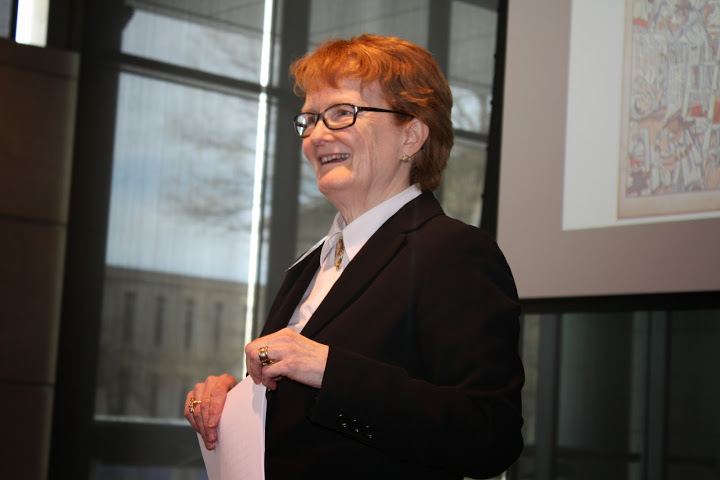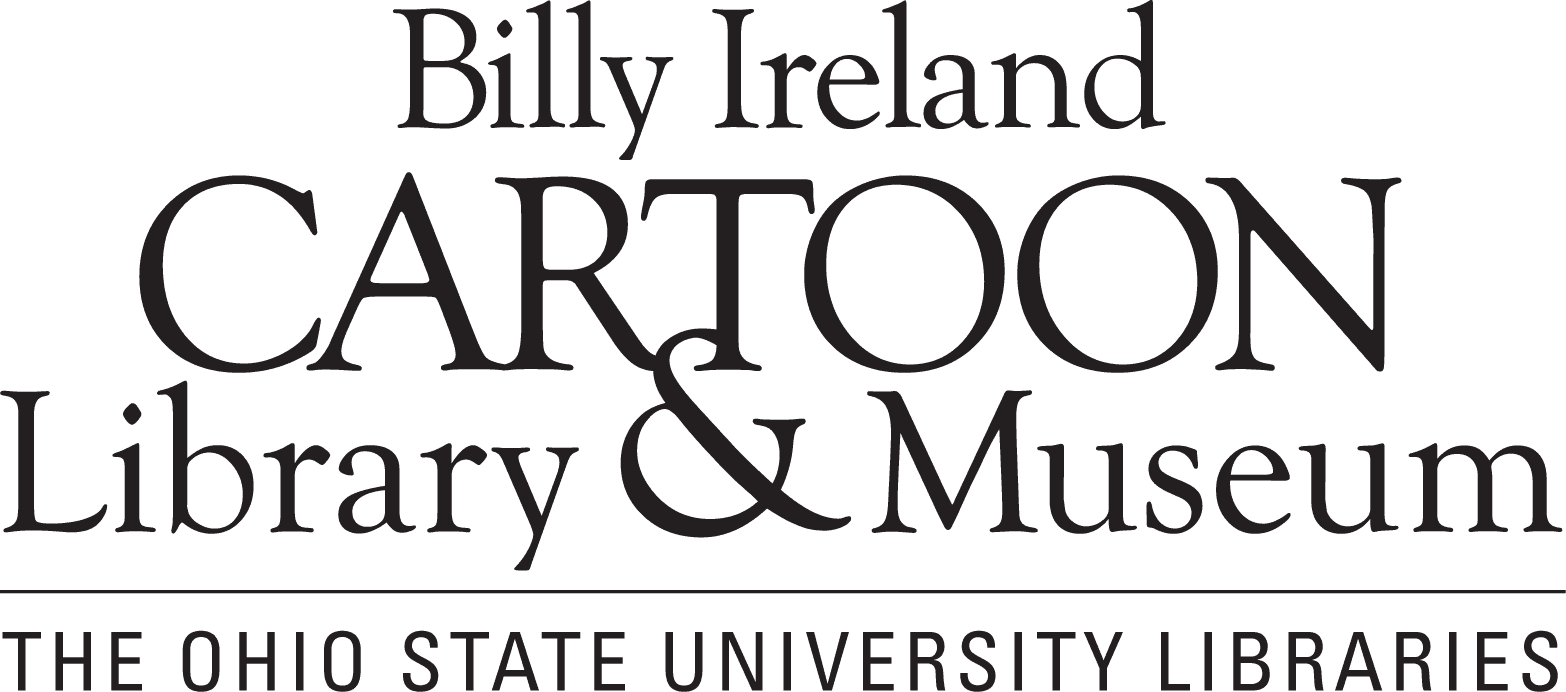Maureen Donovan: Well, I started at OSUL on August 1, 1978, so it has been just about 37 years. Before that, I worked for 4 years at Princeton University’s Gest Oriental Library and East Asian Collections as EA Reference Librarian. As for how it feels, it is a bit scary… I’m entering a mysterious period called “retirement” and I have no idea what it will be like. People are talking about all that I have done, but I just feel like there is so much more to do, that I am leaving a job that is only half done (at best). As I mentioned, even preparing for this interview I discovered a lot of books that I should have ordered before, but haven’t done so yet — only 3 weeks to go. I can’t finish!

August, 1978- the Cataloging Department threw a welcoming party for Maureen when she first joined OSUL as a half-time Japanese cataloger, right before her wedding.
MD: I was a Russian major in college, and went to Russia as one of the first American exchange students, then got interested in Asia. This was during the Vietnam War. I studied Chinese starting in Junior year of college and wanted to continue, so I went on and got an MA in East Asian Languages and Cultures at Columbia U, majoring in modern Chinese literature. We had a requirement to learn “reading knowledge” of Japanese, so I took a bit of Japanese and did a field in modern Japanese history. I was working in the library and got interested in that as something to “do.” So I went to library school also at Columbia. Then I got the job at Princeton. Since it was for all of East Asia, after the adjustment period I started auditing Japanese courses, exchanging language with visiting students from Japan, and then the faculty offered a “proseminar” in Japanese bibliography and research methods, so I took that and learned the basics…. I met my husband at Princeton where he was on a research grant. He already had tenure at Ohio State, so I came out here with him. The library here needed some Japanese books cataloged, so I was hired in August 1, 1978 as a half-time Japanese cataloger. The first thing I realized was that we did not have any reference books that I needed for cataloging (pre-Internet days…). So I got a grant from the Japan Foundation to buy ref. books. People said, “wow it seems you know what you are doing,” so my half-time was advanced to full time and bibliographer duties were added in 1981. I still had never been to Asia…. In 1987, the Japanese Institute (OSU) sent me to Japan for 2 1/2 weeks. That was my first time there. I still felt I was doing all this temporarily though until after I got a Japan Foundation fellowship for the 1995-96 academic year, which I spent in Tokyo with my husband (on a Fulbright) and son. That was when I encountered manga intensively! After that year, I was fascinated!
MD: Well, the reason I wanted to study Russian in the first place was that during the Cold War we had no information about Russian people, culture, food, humor, etc. There was no information flow! When I studied the language, I got access to this world of information that no one else seemed to have. In the summer after my sophomore year in college I went to a Russian summer school at Middlebury college where we had to speak Russian all the time. The other students were mainly grad students talking about their exams, theses, job hunting, etc. I had no interest. Two guys, though, were always talking about interesting things — one was an interpreter at the UN who wanted to add Russian to his portfolio and the other was from the Japanese Foreign MInistry. I always joined their table at meals. They mainly talked about Asia! And I realized how little I knew. So at the end of the summer school I asked their opinion about what language I should take next — and they both recommended Chinese!! So that’s the origin of my interest in Asia — out of ignorance! In a way, this follows through to my development of a course that I teach in International Studies on “Understanding the Global Information Society” — I’m still interested in global flows of information. This also added to my interest in manga — I became fascinated with which manga reached into global space and which are just popular within Japan, etc.

One of the shipments to the Cartoon Library of over 3,500 manga serials, from the Kyoto International Manga Museum in Japan, which Maureen arranged.
MD: When I started working at Princeton I remember how people would hear that a delivery of newspapers had arrived at the library — papers that had been collected for months in Tokyo and then been in transit for more months — and they would come from all over campus to find out who had won a kendo tournament 6 months earlier or the latest about pop culture or whatever…. It is amazing how many changes I’ve seen in my career. Just think about your future — how many changes will still be coming in the years ahead???
MD: When I lived in Tokyo in 95-96, that just happened to be at the height of manga publishing, which I have heard was in 1994. Manga were everywhere! It was unbelievable. Also, I went to an exhibit at the Kawasaki-shi Shimin Museum about the history of manga. This helped me to realize that we could build a manga collection that would “match” the main Cartoon Library collections. When I came back I talked about this idea with Lucy Caswell, and we agreed to set aside some money from each of our funds for purchasing manga. Also, we wrote a grant application to the Japan Foundation to fund some key foundational purchases to establish the collection. After that I became more “serious” about putting together a “broadly representative” collection of manga to support research and teaching. Perhaps the most fascinating thing about manga is how mainstream it is in Japan, how basic it is for their culture. Furthermore, since everyone reads manga, it is a great way to connect with Japanese people. I have met so many fascinating people through manga. I cannot say the same about the literature, history, philosophy, etc books that comprise the main parts of the Japanese collections! One time I was taking a trip on the bullet train on my way back from Sendai where I had visited the Ishinomori Shotaro museums and had several bags full of manga — the Japanese lady sitting next to me on the train, a middle aged/senior citizen, asked me about the books. I told her about the collection I was building and we had a wonderful conversation. It turned out that she was a Catholic nun. Anyway, she also asked if we had some specific titles and I said that I was familiar with them, but that they were hard to get, so we did not have them yet. Well, the next day a parcel arrived at my hotel with those titles!! Her name was Kazuko Sato and one of the books was Asaki Yume Mishi, a manga version of The Tale of Genji. Her donor name is entered in our catalog. There have been a lot of instances like that. When I have been at conferences in Japan, people bring bags of manga to give me. Just recently when Masami Toku was here for the symposium she made a point of saying “thank you” to me for building the manga collection. This activity has been a way to connect with people!
MD: She was hired a bit before me, but around the same time. So I knew her as a colleague. I started buying manga and books about manga that went into the East Asian stacks. She discovered them because of the call numbers and asked me if she could move them to her collection, once she moved over to the Wexner Center location. Then I started buying for the Cartoon Library location and we started having conversations about manga. She had begun to hear about manga from cartoonists, including Art Spiegelman, as I remember. So she wanted to do more about collecting them. Lucy and I worked together well. We are both strategic thinkers! We both enjoy collecting! Also, I liked the challenge of connecting manga with American cartoons and comics. The general discourse was that they were different, but I found similarities. For example, I collected newspaper manga — which many people did not even realize existed.
MD: I love Doraemon!! Also, I love reading Tezuka and encountering his intertextual puns and references. Other favorites include Mizuki Shigeru and Takahashi Rumiko. I love Dragonball!! While I was living in Japan I became a big fan of Shiriagari Kotobuki, who writes manga for the Asahi Shinbun. I would read his manga every day — he takes the pulse of the nation and really nails it every day!! As I was thinking of what to say about favorite manga, I realized I have not been collecting his manga books for a while. This is really bad. I have a lot of catching up to do, because I read that he has been doing some amazing work in writing post-Fukushima manga. Another manga I really like is Oishinbo — about eating and food!
CM: Sounds like I’ll have to check them out myself! Tell me about one or two most unique manga items you have collected?
MD: My proudest moments at OSU… those were probably related to my early web sites and other Internet-related initiatives. In the mid-90s I had a lot of grants to promote use of the WWW for resource sharing among Japanese collections. That work has continued with the Wiki projects I initiated, including the index of Jiji Manga http://library.osu.edu/wikis/library/index.php?title=Jiji_Manga and Mangajin http://library.osu.edu/wikis/library/index.php/Mangajin as well as other manga-related wiki pages. I am also really excited about the new manga collection development strategy, which emphasizes manga magazines and original manga. In particular, I am really happy that I could arrange the first donation of manga magazines from the Kyoto International Manga Museum. Those materials have now been
processed and are available for researchers. When I lived in Japan and saw the recycling trucks going around collecting people’s old manga in exchange for rolls of toilet paper and boxes of tissue, I felt despair! How could we ever collect manga? Volumes that were issued in millions of copies were essentially unavailable for researchers!! However, with cooperation with Japanese institutions such as the KIMM, I really hope that the Billy Ireland Cartoon Library and Museum can continue to collect these works and make them available for researchers!









0 Comments
1 Pingback